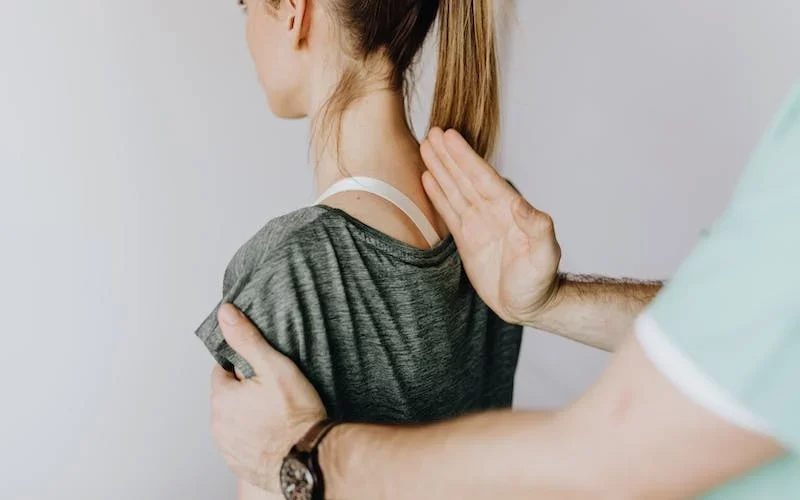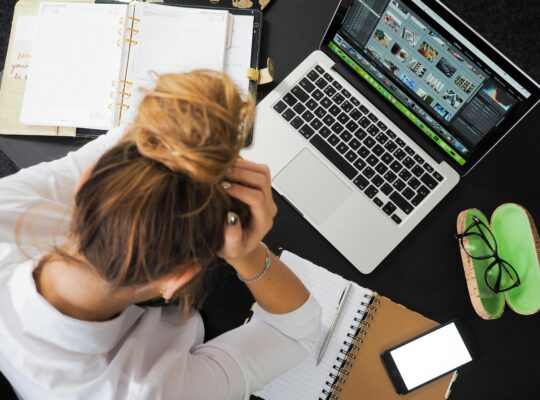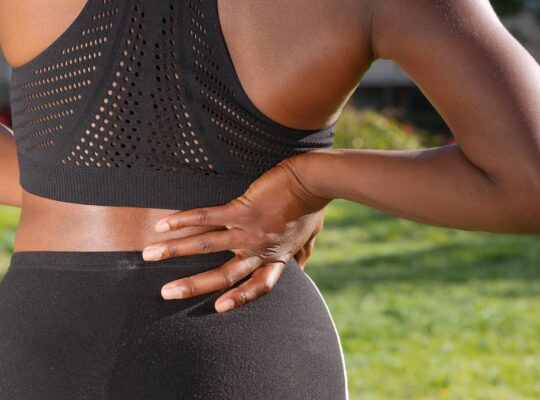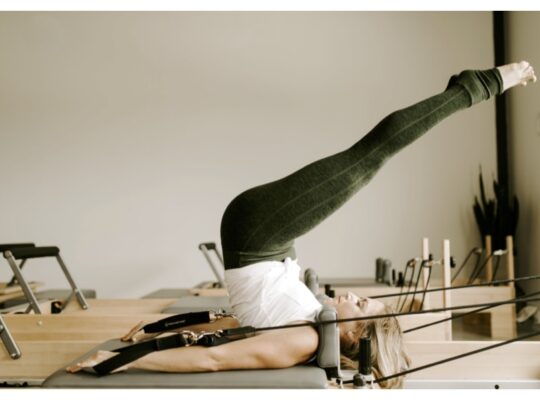Scoliosis is a condition that affects the curvature of the spine, can cause discomfort and pain, and even affect your mental health. This article will explore the causes, symptoms, and my approach to working with Scoliosis.
Scoliosis is a medical condition that affects the spine, causing it to curve sideways in a C or S shape. An estimated 2-3% of the population has some degree of Scoliosis, including myself.
While some cases of Scoliosis are mild and may not require treatment, others can be severe and may require surgical intervention. Understanding the causes, symptoms, and treatment options for Scoliosis is crucial for early detection and effective management of this condition. In this article, we will explore the causes and symptoms of Scoliosis and my approach to managing this condition effectively.
Table of Contents
What is Scoliosis?
According to the National Scoliosis Foundation, “Scoliosis is an abnormal curvature of the spine that affects two to three percent of the population or an estimated 7 million people in the United States. Most are diagnosed with Scoliosis between the ages of 10 and 15, but the condition also affects infants and adults. It is a condition that affects people of all races, classes, and genders. Girls are eight times more likely than boys to have a curve that will progress to a magnitude that requires treatment.”
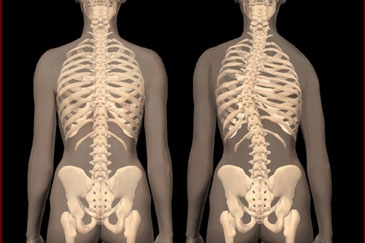
Scoliosis is the most common spinal disorder affecting society but goes largely untreated. Here are some of the causes of Scoliosis:
Congenital Scoliosis
This type of Scoliosis is caused by a spinal defect present at birth. It can occur due to incomplete formation of the vertebrae or due to the fusion of two or more vertebrae.
Neuromuscular Scoliosis
This type of Scoliosis is caused by disorders of the nervous or muscular system, such as cerebral palsy, muscular dystrophy, or spinal cord injury.
Degenerative Scoliosis
This type of Scoliosis is caused by wear and tear on the spine over time. It is most commonly seen in older adults and can develop due to osteoarthritis or spinal stenosis.
Difference between Functional and Idiopathic Scoliosis
I’ve outlined three causes above, but wanted to explain in more detail regarding functional and idiopathic Scoliosis as this is most commonly what I see in my practice.
Functional Scoliosis is a type of Scoliosis that is caused by a problem with another part of the body, such as one leg being shorter than the other or muscle spasms in the back. This type of Scoliosis is not a structural problem of the spine but rather a compensatory response to an external factor. Functional Scoliosis can often be corrected by treating the underlying cause, such as wearing a shoe lift to correct leg length discrepancy.
On the other hand, idiopathic Scoliosis is a type of Scoliosis with no known cause. This type of Scoliosis is the most common, accounting for about 80% of all cases. Idiopathic Scoliosis is typically diagnosed in children and adolescents between the ages of 10 and 18, and it tends to affect girls more often than boys.
This type of Scoliosis is a structural problem of the spine and may progress over time if left untreated. Treatment options for idiopathic Scoliosis include monitoring, bracing, or surgery, depending on the severity of the curvature and other factors.
In summary, functional Scoliosis is caused by an external factor. It is often correctable, while idiopathic Scoliosis has no known cause and is a structural problem of the spine.
My Story

I was diagnosed with idiopathic Scoliosis at age 11 with a prominent C curve primary in my lumbar spine. My Scoliosis is unique in that I can “hide” it pretty well unless I’m being seen in a bathing suit or from a side profile. I remember having significant back pain and breathing problems, but as a ballet dancer and swimmer, I kept going forward and moving through the pain.
In 2014, I demonstrated a reformer exercise to a client when I heard a cracking noise in my spine and felt intense nerve pain down my right leg. My client drove me to the doctor, and I hobbled in to get my scan. I remember looking at the scan with the doctor and being in disbelief at what had happened to my lumbar spine. I had what’s called Spondylolisthesis at L3/4 along with nerve damage and two bulging discs.
It was also eye-opening to be confronted with my Scoliosis and realize what this injury could do to worsen the curve. But I was determined to rehab myself because surgery was not my first choice. I sought out every rehabilitative method available and threw myself into research about Scoliosis.
My lifelong experience with Scoliosis, in addition to my additional back injuries, has given me the ability to empathize on a level that no one else typically can provide because they haven’t experienced it. Working with someone who seems to know what you are up against always lets to better results in all aspects of life. This is something traditional rehabilitation is usually lacking. I have studied scoliosis care to support my own Scoliosis and worked with clients, sharing my healing knowledge for over ten years, and I would love to be an asset to your Scoliosis journey. Please reach out here to book a session with me.
Symptoms of Scoliosis
Visible signs
The most common sign of Scoliosis is an abnormal curvature of the spine, which can be visible to the naked eye. This may appear as a visible hump or asymmetry in the shoulders, waist, or hips.
Physical symptoms
Scoliosis can also cause physical symptoms such as back pain, neck pain, stiffness, and limited range of motion. You may also experience muscle imbalances, such as uneven hips or shoulders, which can lead to discomfort or difficulty with activities of daily living. Severe Scoliosis can affect the shape of the rib cage, making it difficult for the lungs to expand properly. This can result in shortness of breath and other respiratory problems.
Psychological effects
Scoliosis can also have psychological effects, particularly in adolescents, which is why it’s so important to address this condition early on. A visible spinal curve may lead to self-consciousness or negative body image, impacting emotional well-being and quality of life. In my practice, I’ve worked with scoliosis clients from ages 15 – 83, and I’ve found that everyone, including myself, has experienced self-consciousness at some point.
In addition, people with Scoliosis may experience anxiety about their condition, mainly if they are worried about the progression of the curvature or potential complications. The impact of Scoliosis on a person’s physical appearance and quality of life can also lead to depression, mainly if the condition causes chronic pain or limits their ability to participate in activities they enjoy.
Diagnosis of scoliosis
Here are some standard methods used to diagnose Scoliosis:
Physical examination
A physical examination is usually the first step in diagnosing Scoliosis. During the exam, a professional will look for visible signs of spinal curvatures, such as uneven shoulders, hips, or waistline, using the Adam’s Forward Bend Test. They may also evaluate the patient’s range of motion and muscle strength.
Imaging tests
Imaging tests such as X-rays, CT scans, or MRI scans can help provide a more detailed view of the spine’s curvature and help determine the degree of Scoliosis. These tests can also help identify any underlying conditions causing Scoliosis.
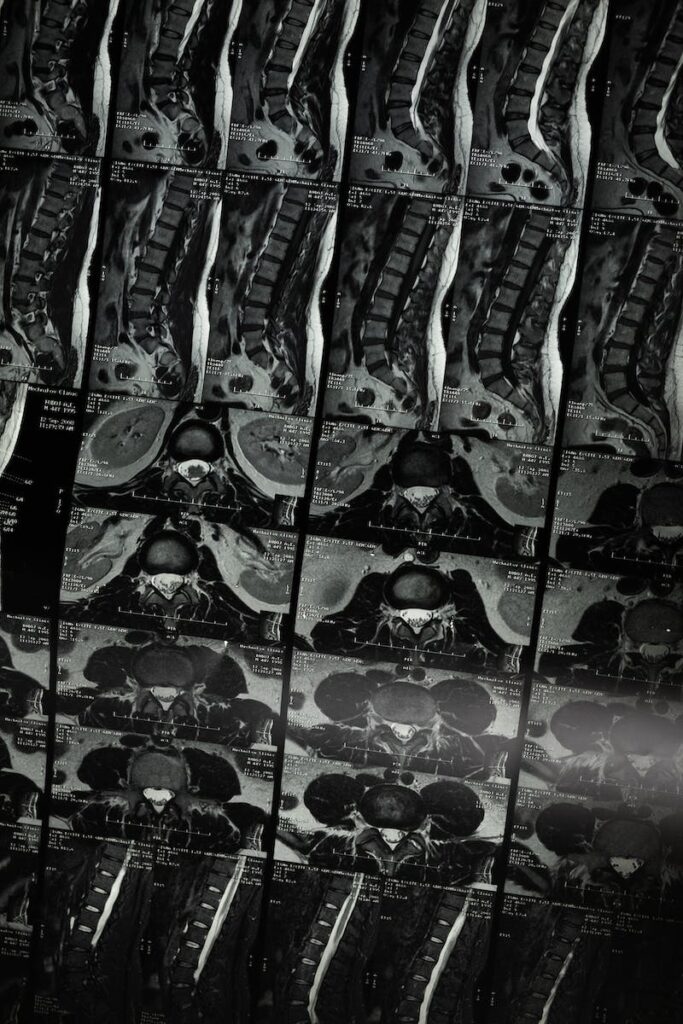
Treatment Options For Scoliosis
The treatment of Scoliosis can vary depending on several factors, including the severity of the curvature, the age and overall health of the individual, and the potential for further progression. Treatment options for Scoliosis include:
Observation
For individuals with mild Scoliosis, observation may be the best course of action. Regular curvature monitoring with X-rays and physical exams can help ensure the condition is not progressing.
Bracing
In some cases, wearing a brace may be recommended to prevent the curvature from worsening. Bracing is most effective for children and adolescents whose bones are still growing. The type of brace and the length of time it must be worn will depend on the individual’s age, the severity of the curvature, and other factors.
Surgery
Surgery may be necessary for individuals with severe Scoliosis or for those whose curvature is progressing rapidly. Surgery is done to stop the curves from moving, reduce vertebral twisting, and maintain trunk balance. The three types of surgery available for Scoliosis are fusions, growing systems, and Fusion-less/VBT.
Pilates & Functional Movement
This can benefit individuals with Scoliosis by helping to improve posture, strengthen the back muscles, and increase flexibility.
My Approach To Treating Scoliosis
I have a unique approach to working with Scoliosis in that I look at it from many layers. I believe in releasing what’s holding the curves of the spine and then aiding in creating overall strength and balance to support the new alignment.
In my practice, I utilize fascia release, breath work, and movement to create better mobility and focus on strengthening key muscles to support the body’s natural alignment. I also create a safe, nurturing healing space for my clients and believe in body positivity and helping everyone find joy in movement instead of getting fixated on the physical look or limitations.
This balance is critical to helping you feel better and providing a well-rounded exercise plan for safe movement, better mobility and strength, and preventing Scoliosis from worsening as you age.
I do not believe in a one-size-fits-all approach, as my work focuses on individualized care, but I will give examples of some of the modalities I use with my Scoliosis clients.

Breathwork
Breathwork is the practice of controlling the breath and can be very beneficial for individuals with Scoliosis. Breathwork helps strengthen the spine’s muscles, including the diaphragm and intercostal muscles, which support good posture.
This can help to counteract the effects of Scoliosis, which often result in an uneven distribution of weight on the spine. Scoliosis can also affect lung function, making it difficult to breathe deeply. Breath work can improve lung capacity and breathing patterns, which can help to alleviate discomfort and improve overall health.
Side Ribcage Breathing
My favorite tool is side ribcage breathing, also known as lateral thoracic breathing, which involves intentionally directing your breath into the lower lobes of your lungs, located on the sides of your ribcage. This technique can help improve Scoliosis by helping to lengthen and stretch the muscles and connective tissue surrounding the ribcage and spine, which can help reduce pain and discomfort.
By focusing on breathing into the lower lobes of the lungs on the concave (or inwardly curved) side of the spine, you can help expand the ribcage and create more space between the ribs, which can help alleviate pressure and tension in the surrounding muscles and tissues.
To practice side ribcage breathing:
- Start by sitting or standing tall with your spine in a neutral position.
- Place one hand on the concave side of your ribcage (the side that curves inward) and the other on your belly.
- As you inhale, focus on directing your breath into the lower lobes of your lungs on the concave side of your spine. You should feel your ribcage expanding laterally (sideways) as you breathe in.
- As you exhale, focus on releasing tension or tightness in the muscles surrounding your spine and ribcage.
Movement
Many exercises can be helpful for individuals with Scoliosis. These exercises aim to strengthen the muscles around the spine, improve posture, and increase flexibility.
Cat-Cow Stretch
Get on your hands and knees and alternate between arching your back up (like a cat) and rounding your back down (like a cow). This stretch can help to improve mobility in the spine and release tension in the muscles.
Pelvic tilts
Lie on your back with your knees bent and your feet on the floor. Slowly tilt your pelvis towards your ribcage and back down towards the bottom. This exercise can help to strengthen the abdominal muscles and improve pelvic alignment.
Side plank
Lie on your side with your elbow directly under your shoulder and your legs straight out to the side. Lift your hips off the ground and hold for a few seconds before lowering back down. This exercise can help to strengthen the muscles along the side of the body and improve overall stability.
Bird Dog
Start on your hands and knees with your hands directly under your shoulders and your knees under your hips. Engage your core muscles to stabilize your spine and maintain a neutral position. Slowly extend your right arm forward and your left leg back, keeping your hips level and your spine in a neutral position. Hold for a few seconds, then return to the starting position.
Repeat on the other side by extending your left arm forward and your right leg back. Repeat for several repetitions. Bird dog exercise can help improve Scoliosis by strengthening the core muscles and stabilizing the spine.
Takeaway
In conclusion, Scoliosis is a condition that affects the spine, causing it to curve abnormally. While Scoliosis can be a source of discomfort and pain, many approaches can be taken to manage its symptoms and improve overall health and well-being. These may include exercises to strengthen the muscles around the spine, improve posture, and increase flexibility, as well as breath work to support lung function and reduce stress levels.
Taking a proactive approach to Scoliosis can improve your quality of life and reduce the limitations Scoliosis currently places in your daily life. Movement is vital to life, and I would love to develop a personalized exercise plan that is safe and effective for your individual needs. Please reach out here to book.
Thanks for being here with me. E
Images courtesy of Pexels or my own.
